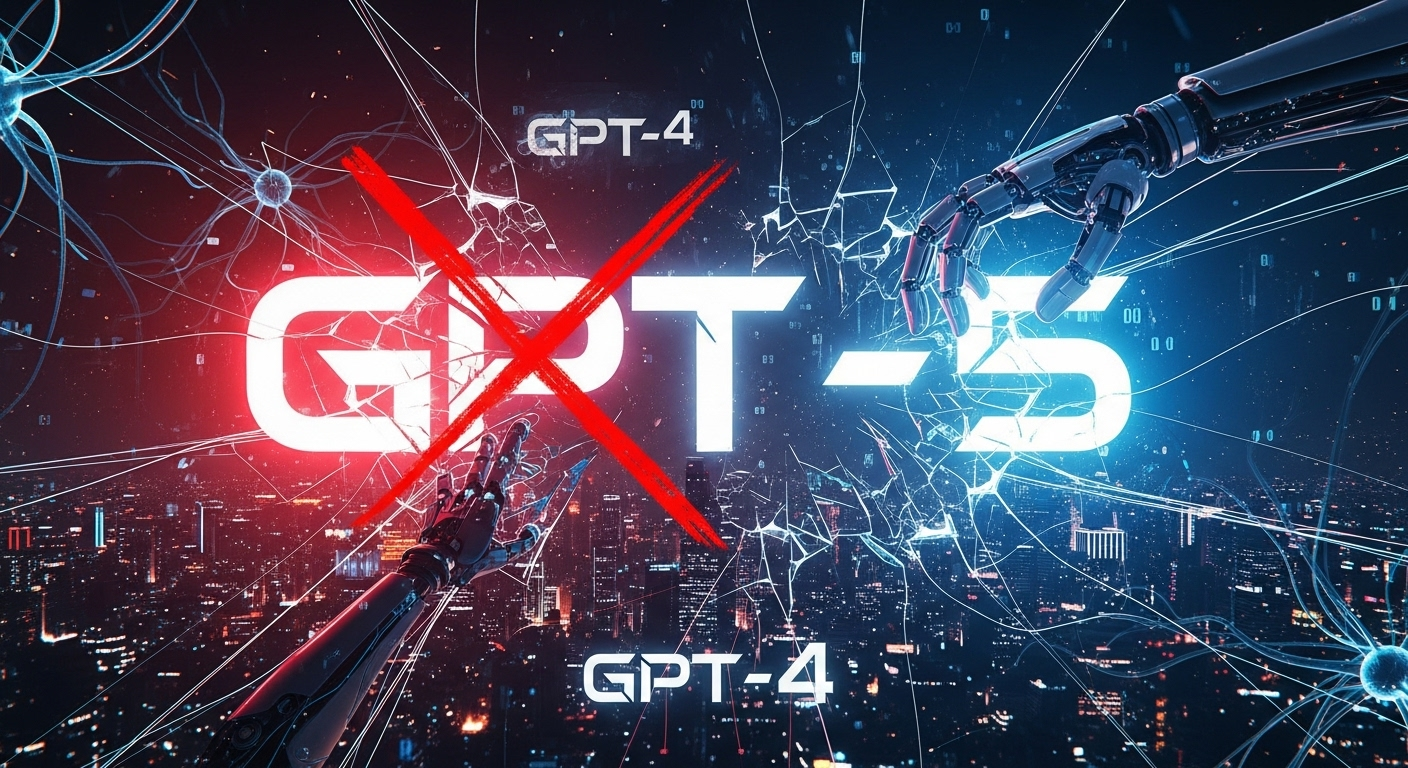GPT-5 Launch Controversy: Performance Issues, User Backlash, and the Real Story
With OpenAI’s GPT-5 launch, the announcement was accompanied by weeks of intense hype. The company’s leadership teased a groundbreaking leap forward in AI capabilities — a model that would revolutionize workflows, enhance creativity, and push the boundaries of conversational intelligence.
Instead, many users felt they got something entirely different. The launch sparked one of the largest waves of criticism OpenAI has faced, with complaints ranging from reduced accuracy and personality changes to missing features that had become part of daily workflows.
This article examines what went wrong, what’s already been fixed, and whether GPT-5 truly represents progress or a step backwards.
The Hype vs. The Reality
In the lead-up to the release, OpenAI executives — including CEO Sam Altman — heavily hinted that GPT-5 would be a transformative moment in AI history. Public posts featured dramatic imagery, such as the Death Star rising over a planet, fueling expectations for a “world-changing” technology.
However, when the model became available, early adopters reported:
- Shorter, less engaging responses
- Reduced accuracy in certain tasks
- Removal of older models that many relied on
- Limited prompt allowances for paid users
- Suspicions that model routing favored cheaper, lower-quality variants
This disconnect between marketing and reality became one of the most cited points of frustration.
The Model Removal Controversy
One of the most disruptive aspects of the launch was the sudden disappearance of eight popular models — including GPT-4.0, GPT-4.5, GPT-3.5, and GPT-3.5 Pro — from ChatGPT.
For many, this wasn’t just an inconvenience; it broke established workflows. Users who had tuned prompts for specific models suddenly had no way to access them. The backlash was swift, with long-time subscribers demanding the return of their preferred versions.
OpenAI’s Response:
Following strong community feedback, OpenAI reinstated “legacy models” as an optional feature. Users on higher-tier plans can now enable them through settings, restoring access to GPT-4.0 and others.
This reversal addressed one of the most valid criticisms — though some still argue the original removal damaged trust.
The Model Router and Cost-Saving Speculation
GPT-5 introduced an automatic “model router” that decides which variant — from fast, lightweight versions to more resource-intensive “thinking” models — should handle a query.
Think of it as a dispatcher assigning calls — sometimes routing your ‘emergency’ to the intern instead of the specialist.
While intended to simplify the experience for non-technical users, this system was buggy at launch. The router often sent complex prompts to less capable models, resulting in weaker outputs.
Critics suggested the feature might also serve a financial purpose: minimizing use of expensive models to cut infrastructure costs. OpenAI denied this as the primary motivation, and subsequent updates appear to have improved routing accuracy.
Personality Changes and Response Style
Another common complaint was that GPT-5 felt less personable and more “robotic.” Some described the tone as abrupt or overly concise, lacking the warmth and playful personality of GPT-4.0.
“GPT-4 felt like a witty coworker. GPT-5 feels like corporate email.”
Side-by-side tests show differences are subtle. In casual prompts, both GPT-5 and GPT-4.0 deliver similar creativity, though GPT-4.0 can occasionally display a touch more charm. It’s possible that early personality complaints were partly caused by the router assigning users to more logic-driven “thinking” variants during the first days after launch.
Coding Performance: Mixed Results
For developers, coding ability is a major benchmark for any AI model. To test GPT-5, side-by-side challenges were run against GPT-3.5 Pro, Claude 4.1, and Grok 4.
The task: build a playable browser version of the card game Balatro.
Findings:
- Claude 4.1 produced the most visually appealing version but lacked some functionality.
- GPT-3.5 Pro delivered the most functional version, with working game mechanics.
- GPT-5 produced a playable prototype but ranked third in overall quality.
- Grok 4 lagged behind in both performance and completeness.
These results suggest that, despite its marketing, GPT-5 may not yet surpass older models or competitors in practical coding scenarios.
Accuracy Concerns
A further point of contention is GPT-5’s accuracy in logic and reasoning tasks. Some users have shared examples where earlier models — or even competitor systems — provided correct answers while GPT-5 failed.
While no AI model is flawless, the perception that a new flagship performs worse in certain tasks undermines the value proposition for many users.
What’s Been Fixed Since Launch
Since the initial backlash, OpenAI has:
- Restored access to legacy models for eligible users
- Improved the model router to better assign tasks
- Increased transparency about how model switching works
According to OpenAI’s release notes , legacy model access and new routing improvements were added just days after the backlash.
These changes have addressed some early frustrations, but other concerns — such as coding strength and personality consistency — remain unresolved.
The Bigger Picture
GPT-5 is a capable model, but its launch underscores a recurring challenge in AI development: managing expectations. When hype exceeds reality, even a strong release can feel underwhelming.
For power users who depend on specific behaviors, personality styles, or coding performance, GPT-5 may not yet be a full upgrade. For casual users, the improvements in speed and versatility may outweigh its shortcomings.
Final Verdict
The GPT-5 rollout was one of OpenAI’s most controversial launches, marked by missteps in communication, feature removals, and uneven early performance.
While updates have improved the experience, GPT-5’s reception serves as a reminder that AI adoption isn’t just about technical capability — it’s about trust, transparency, and delivering on promises.
Also read: ChatGPT vs Gemini vs Grok: The Ultimate AI Showdown
